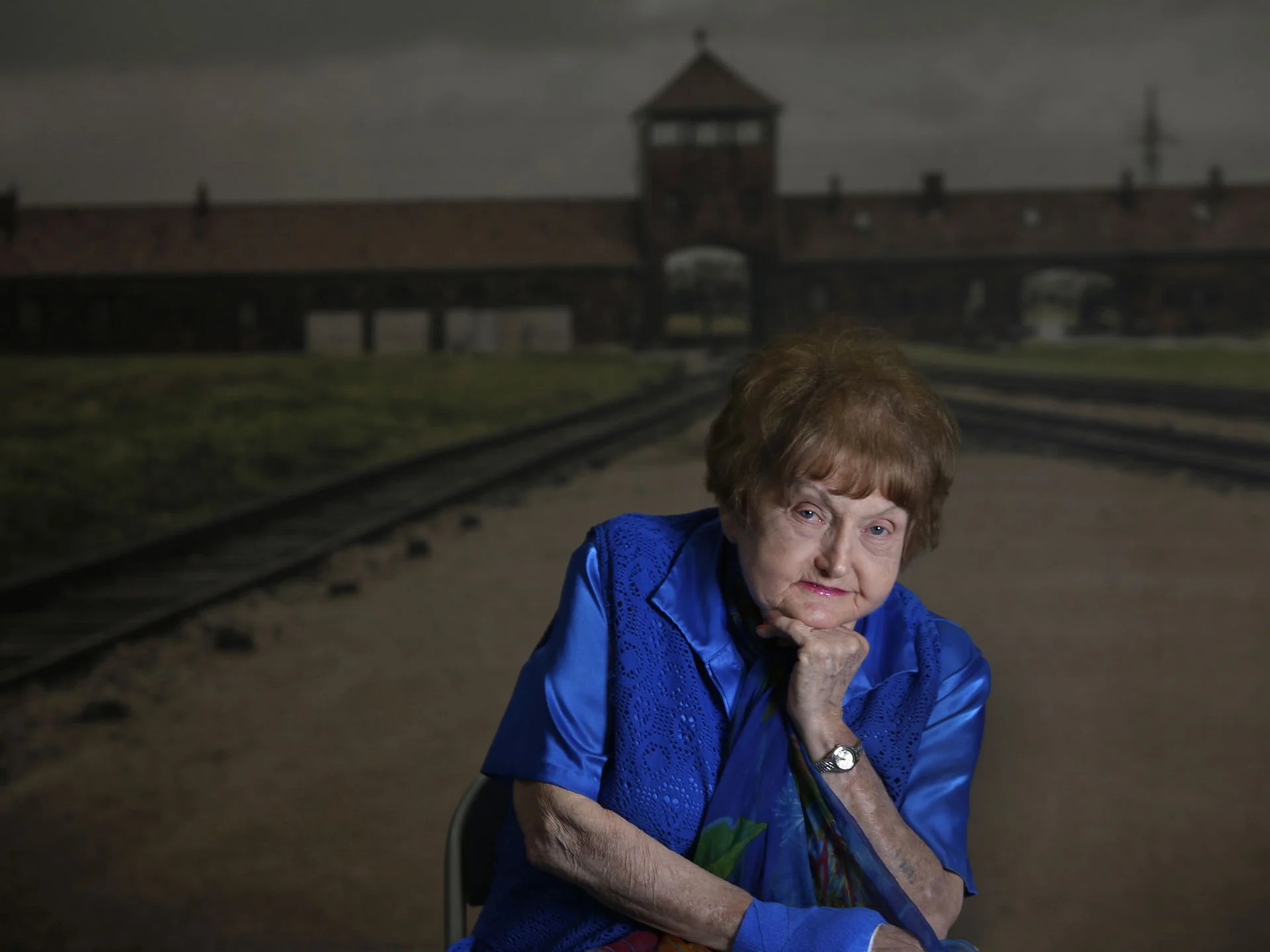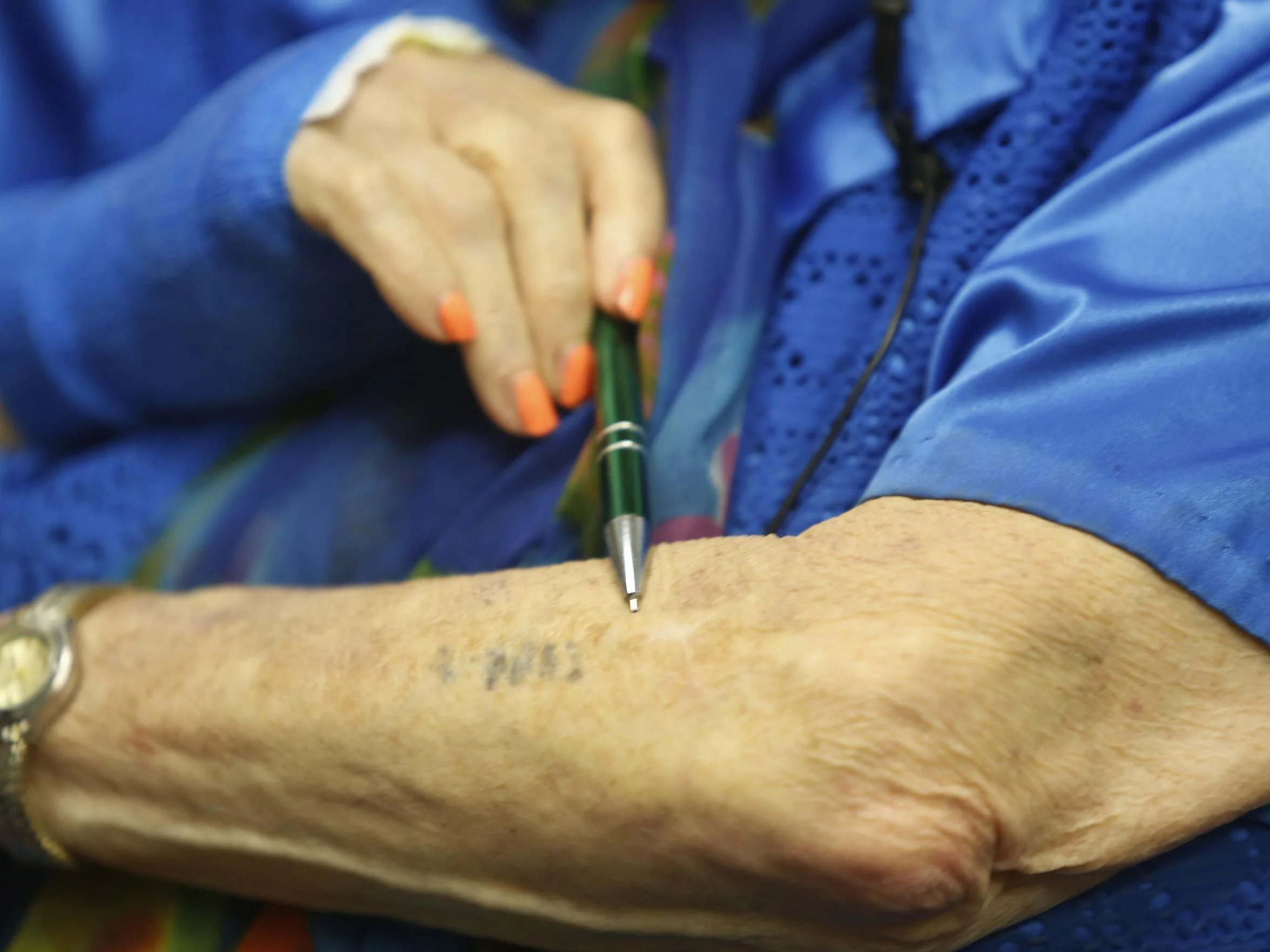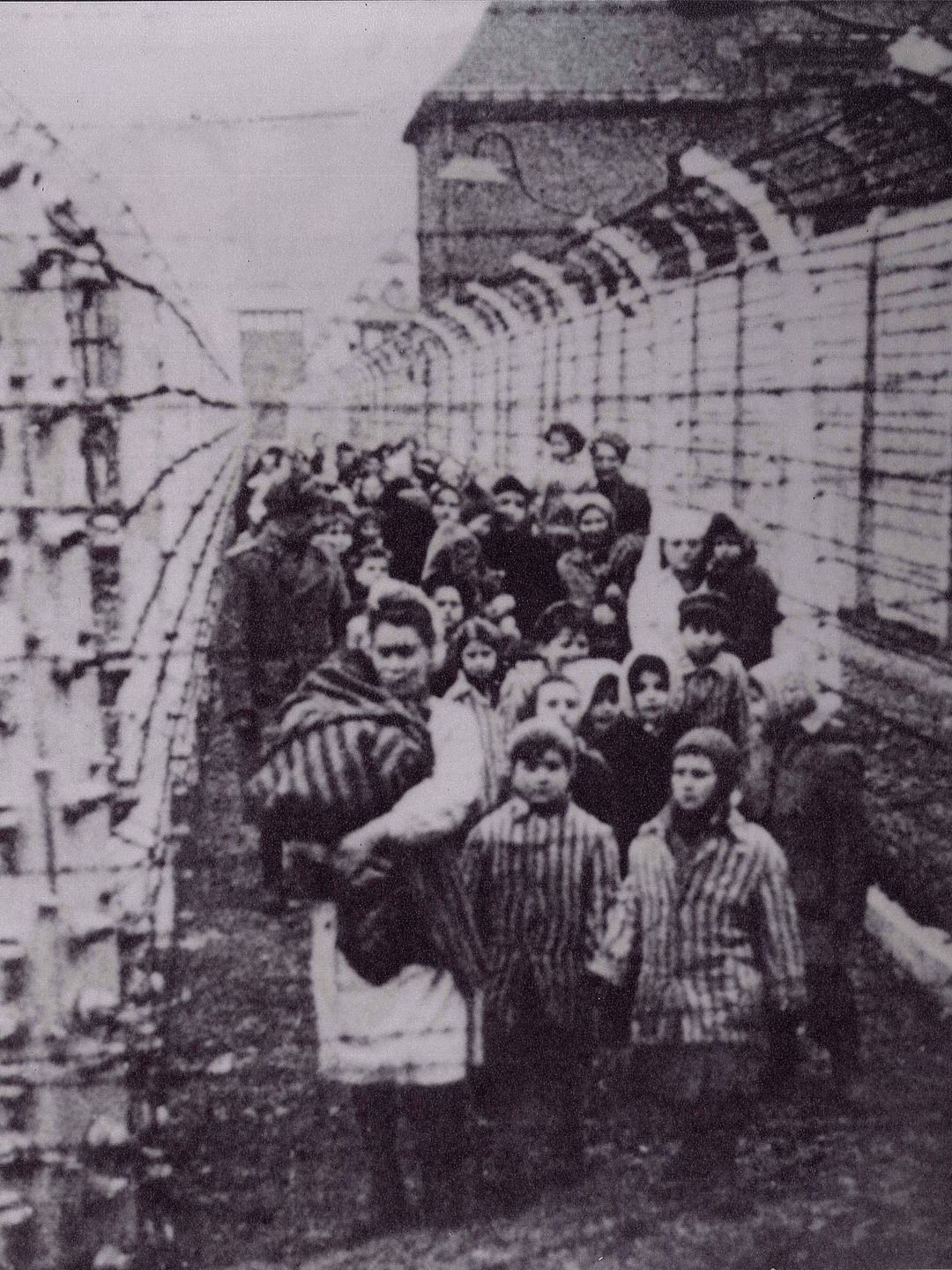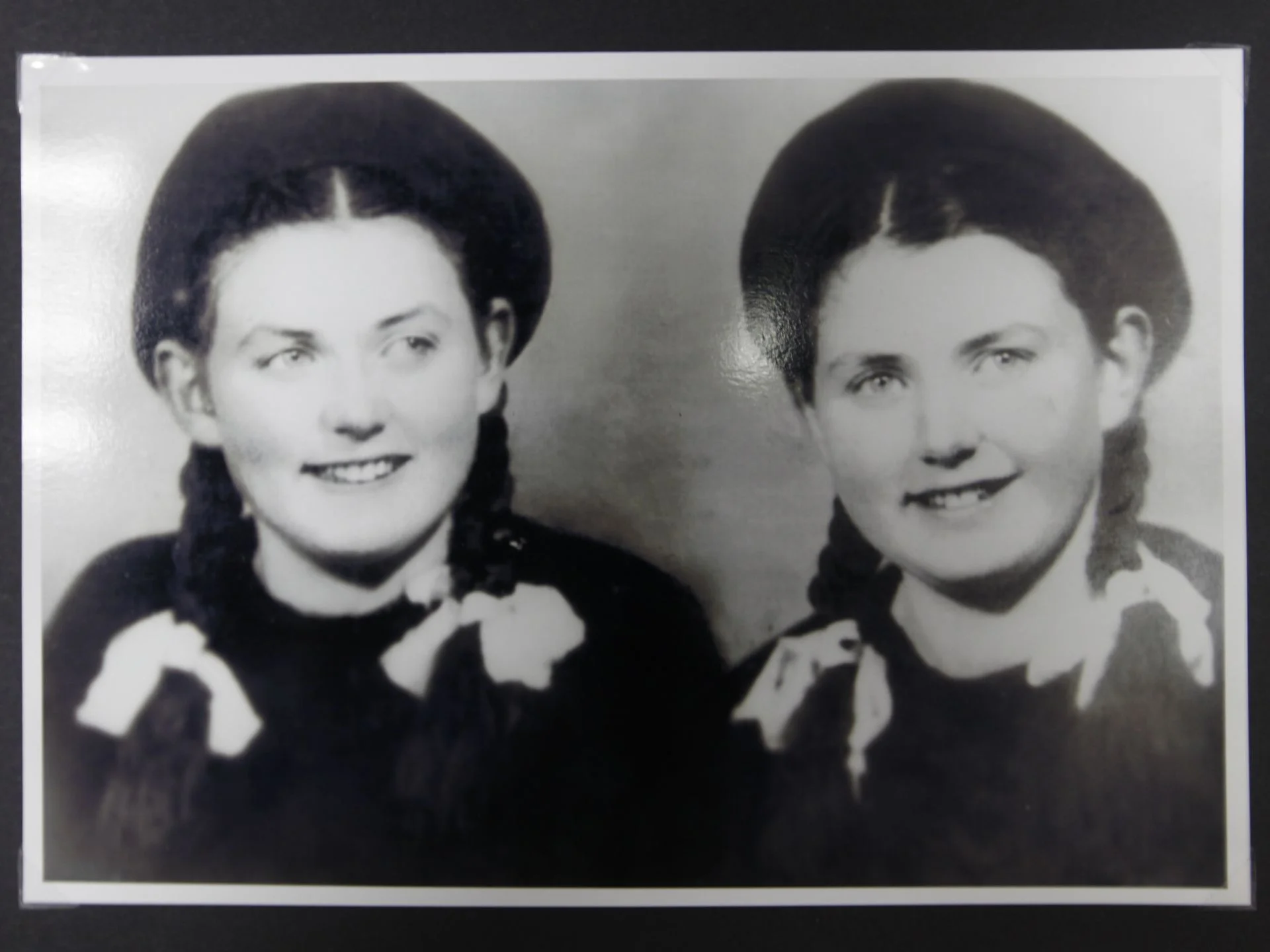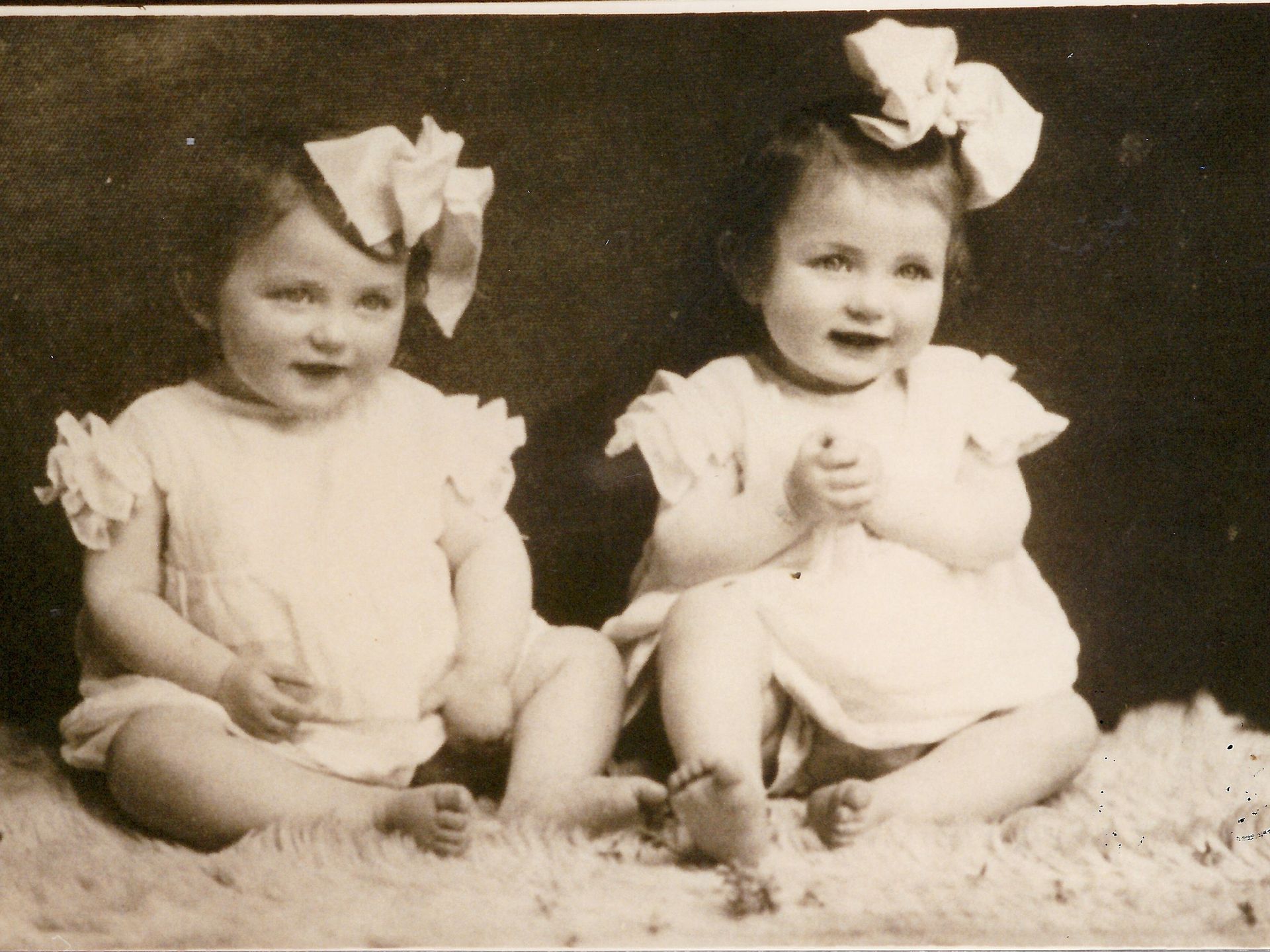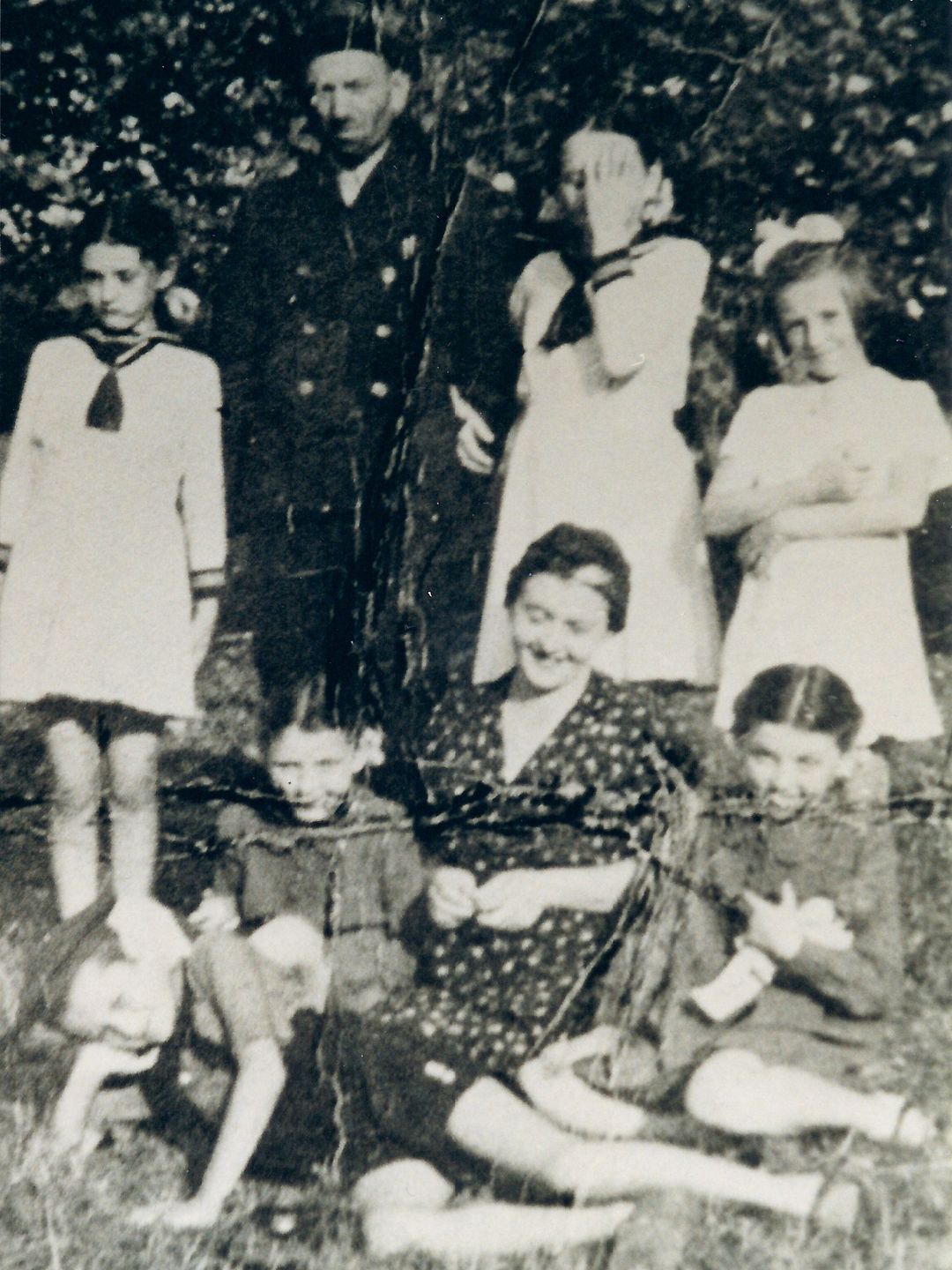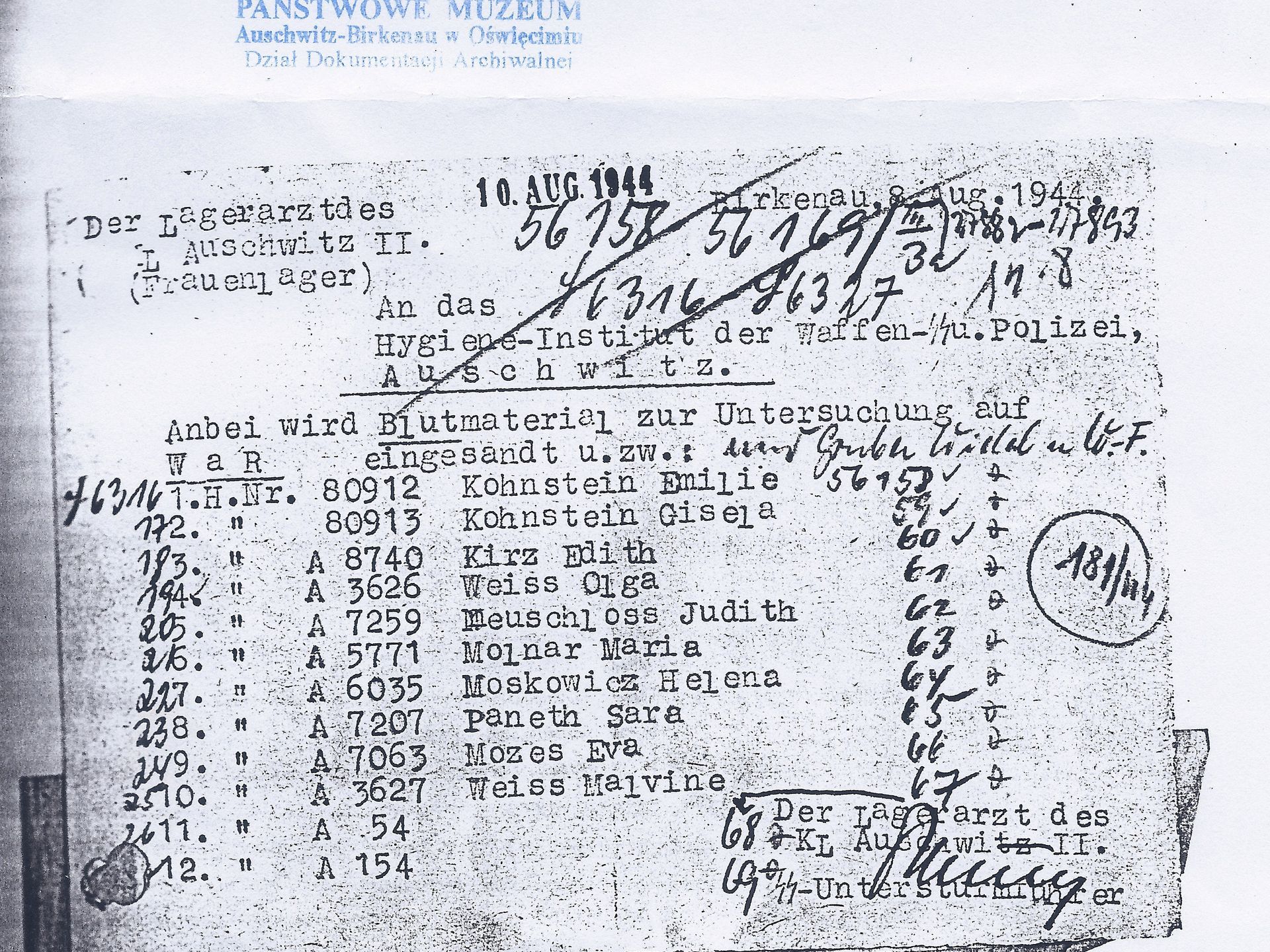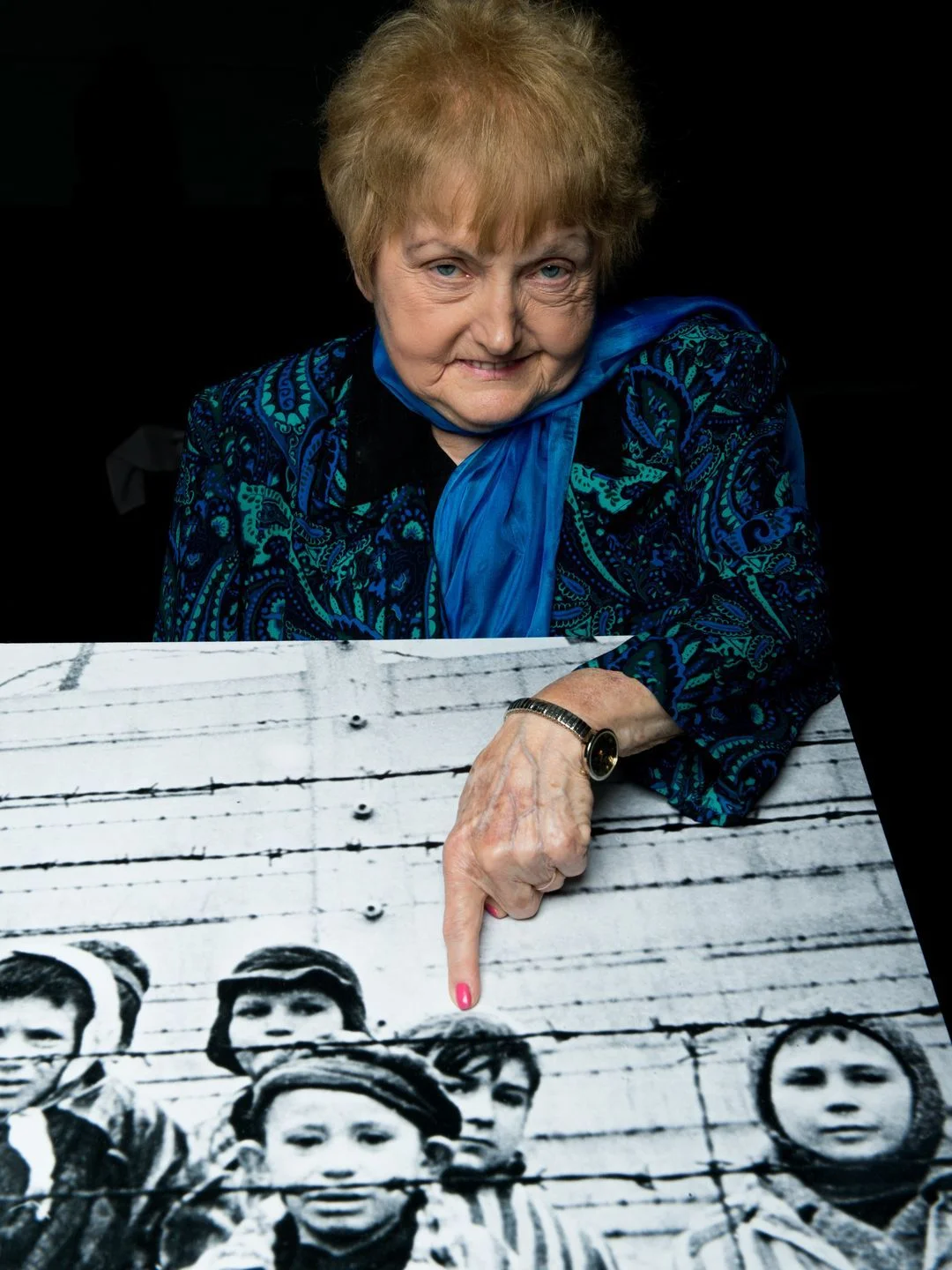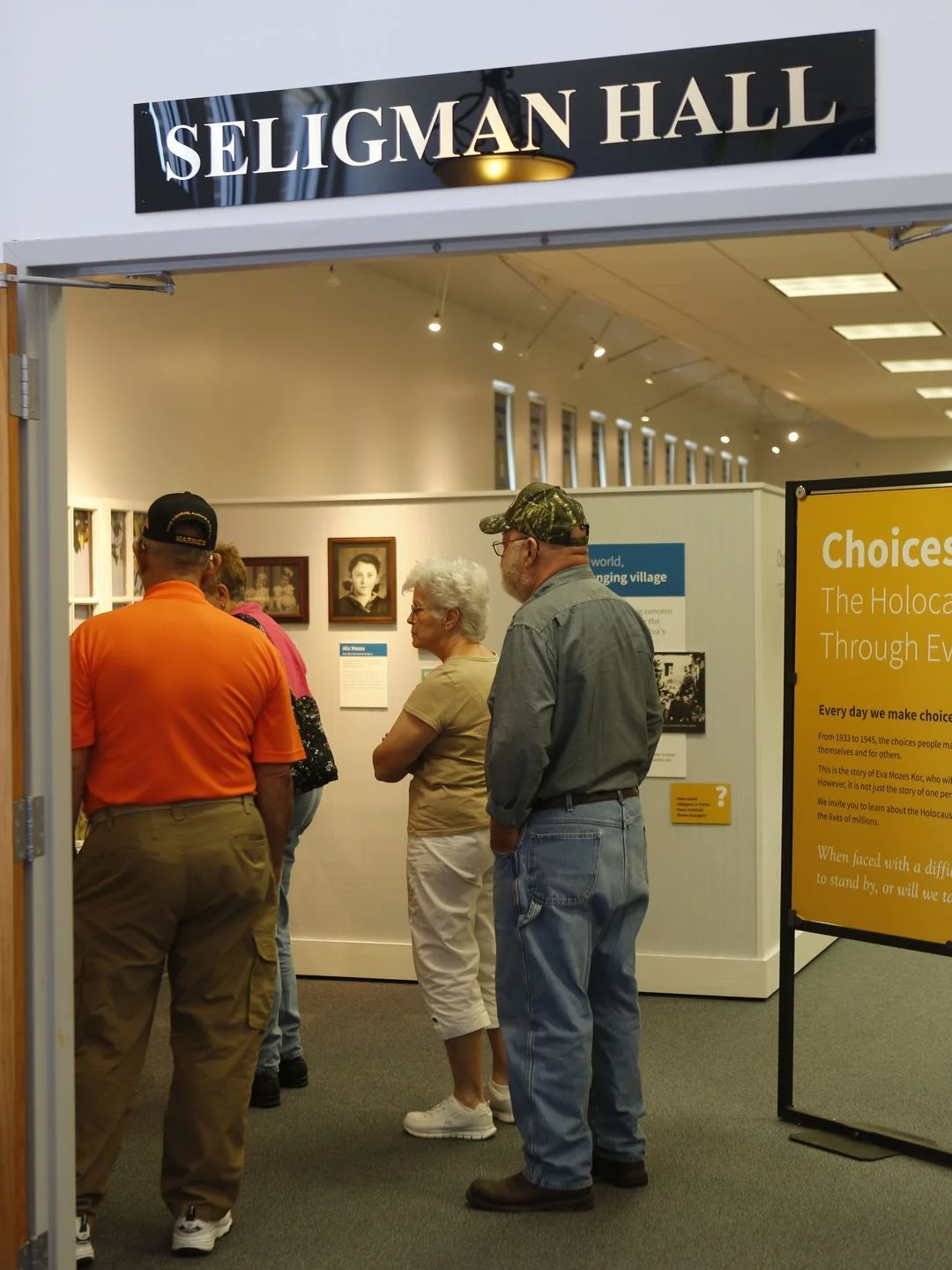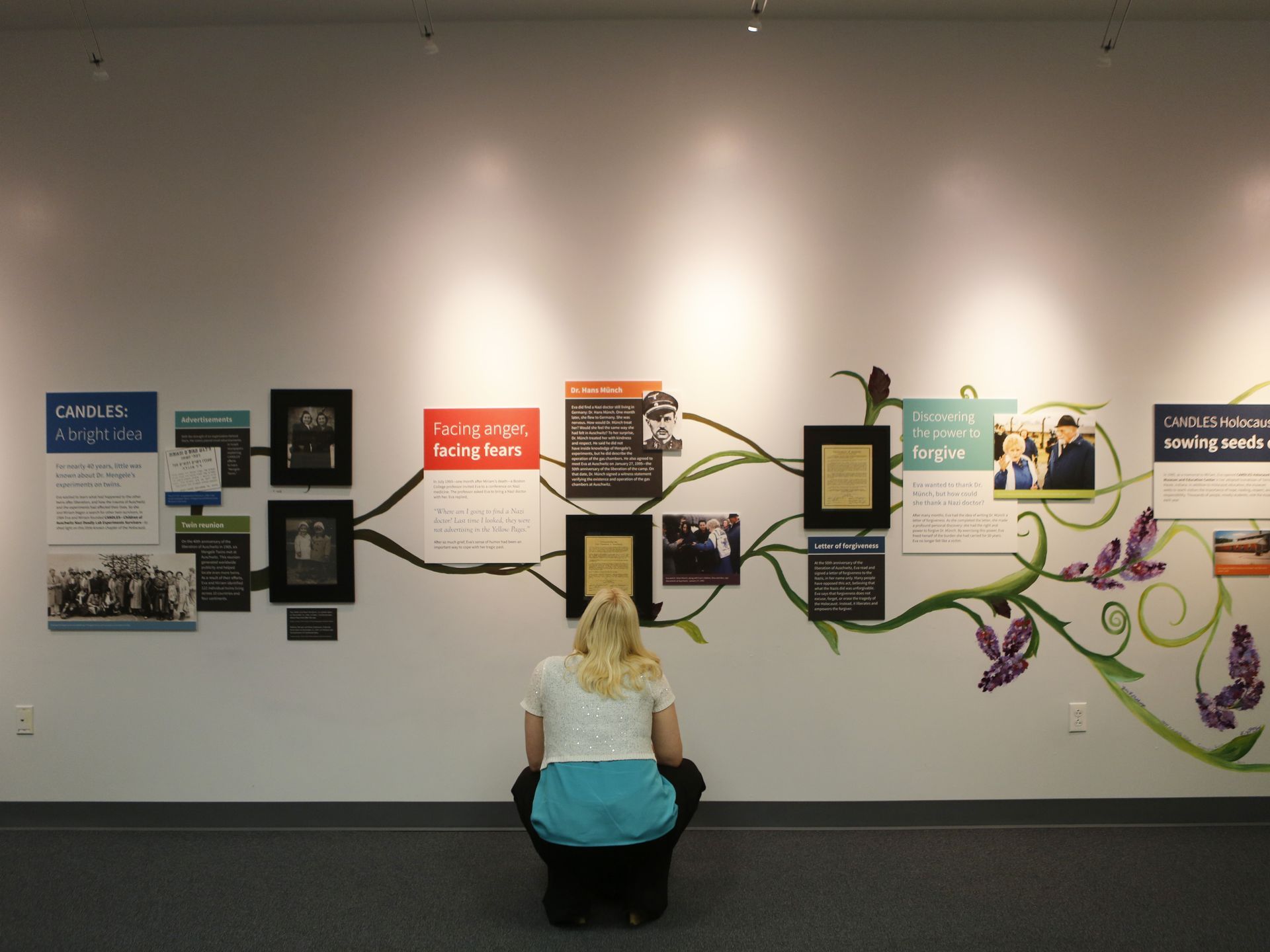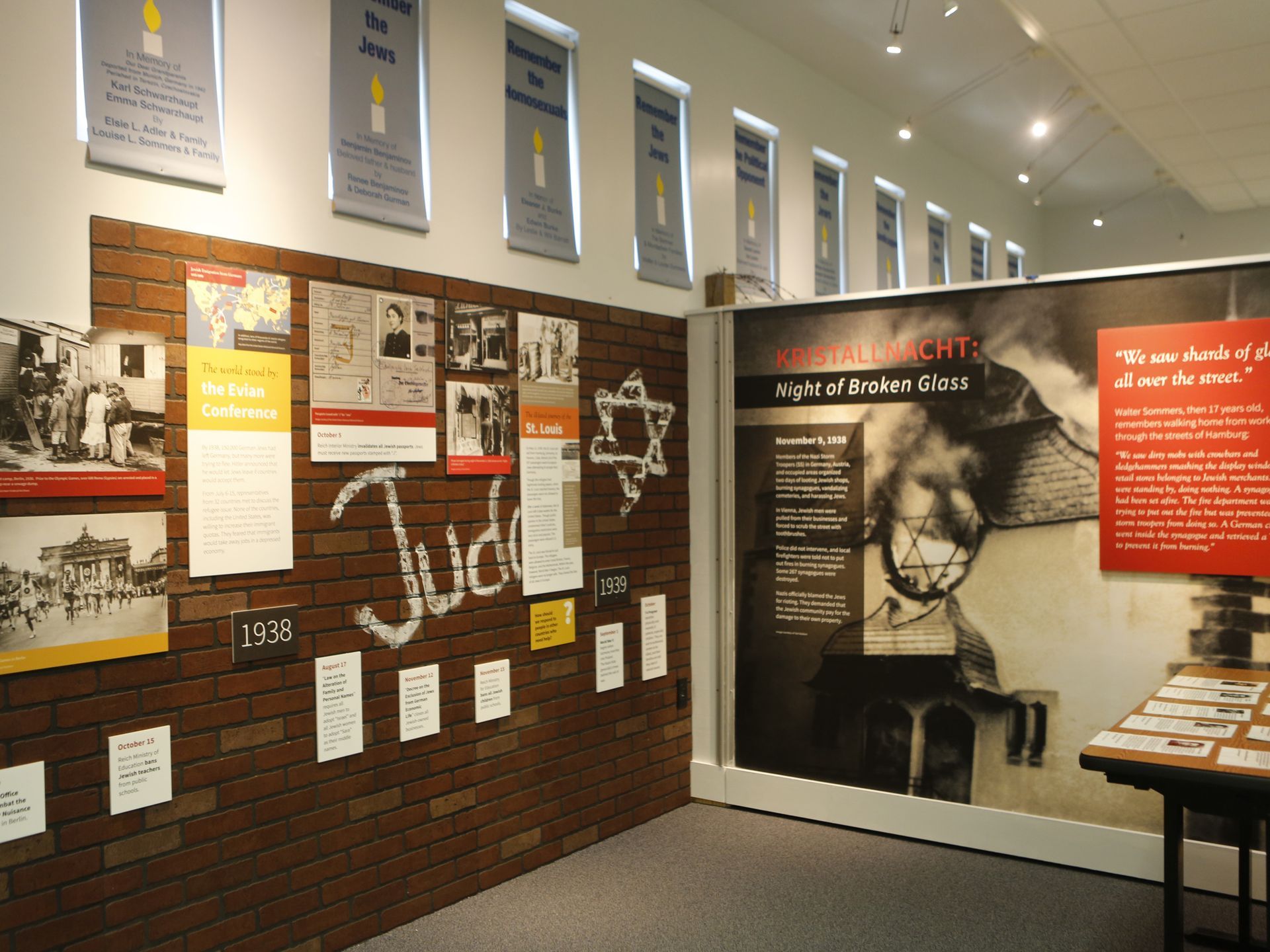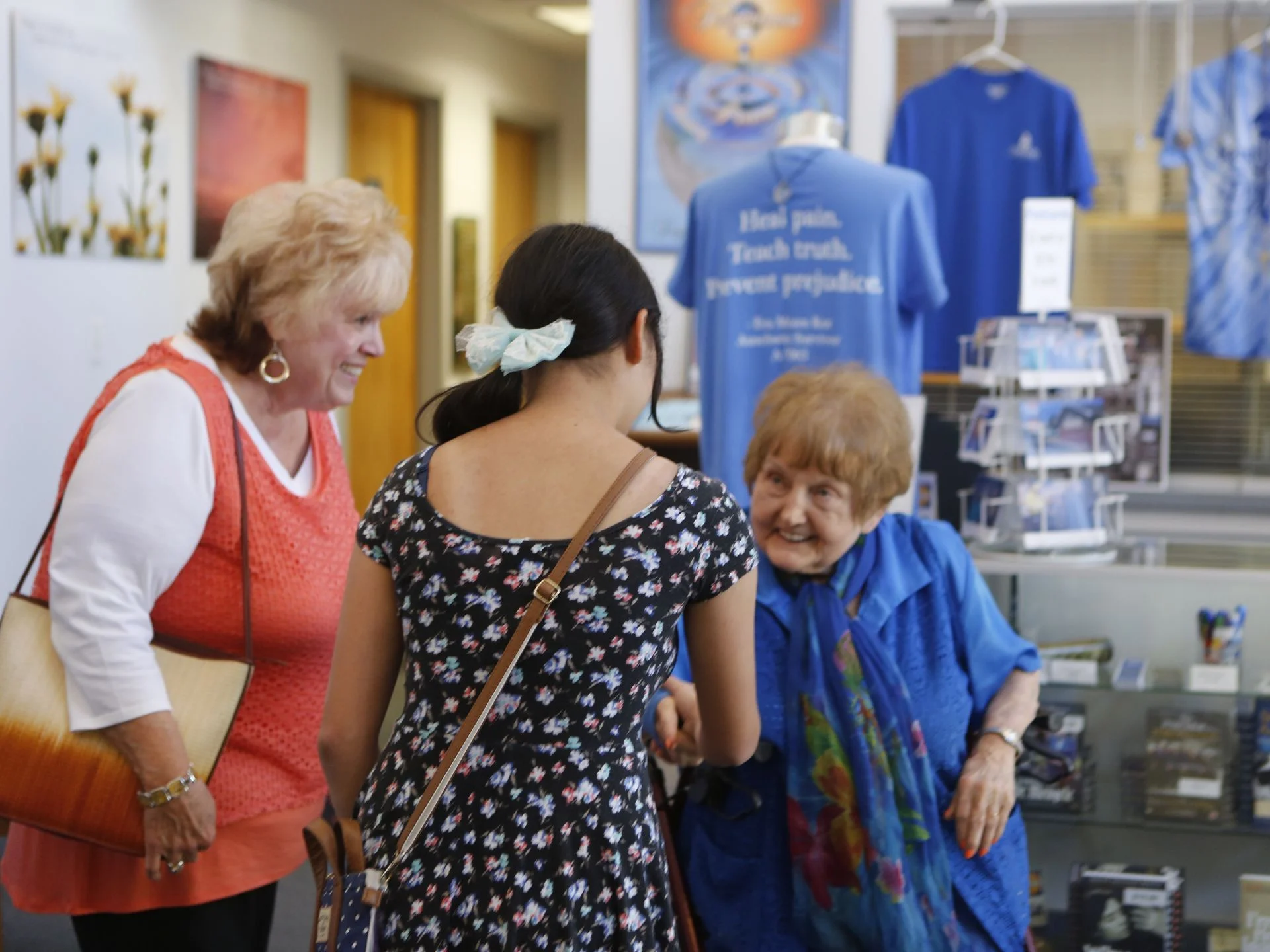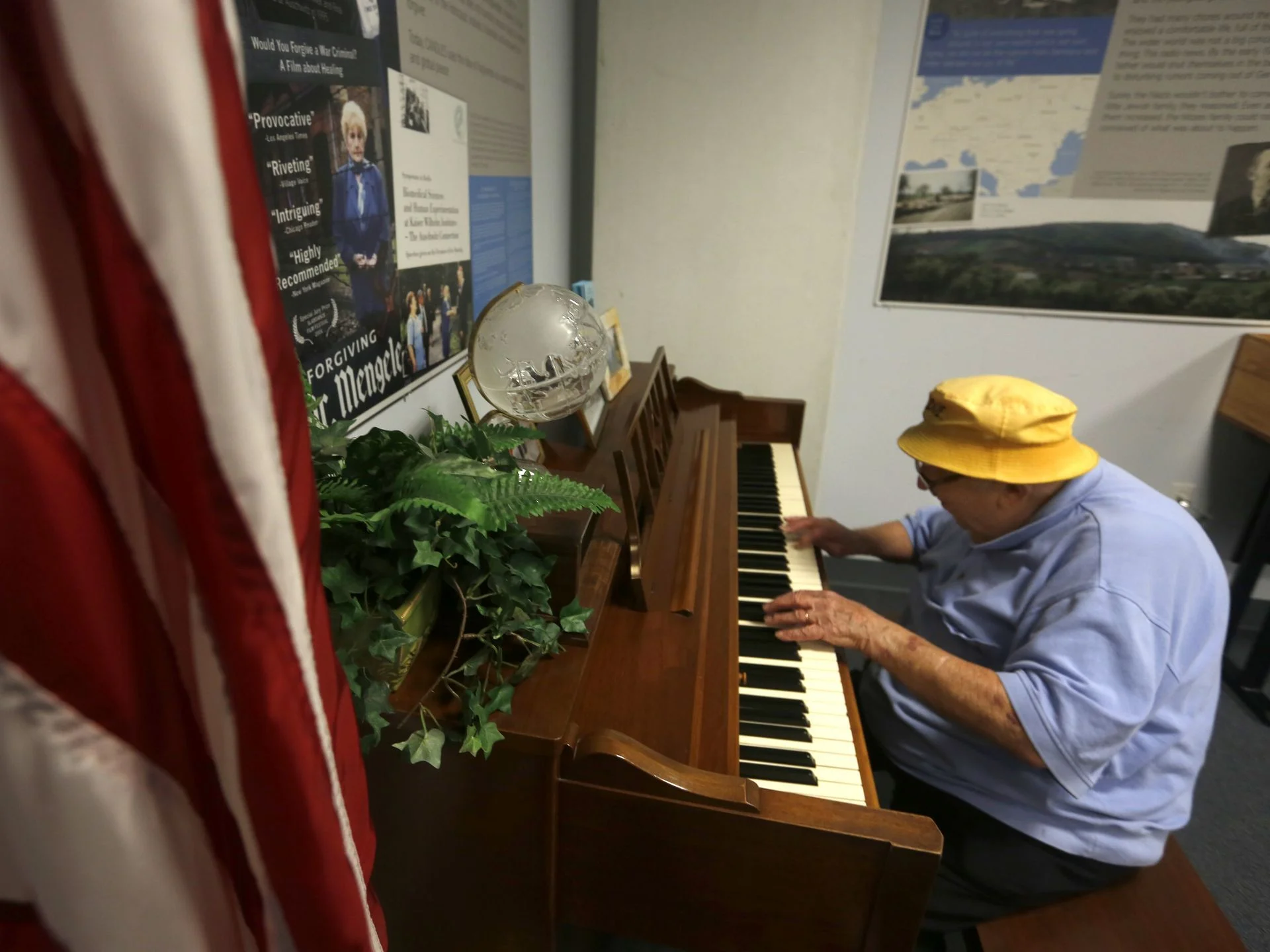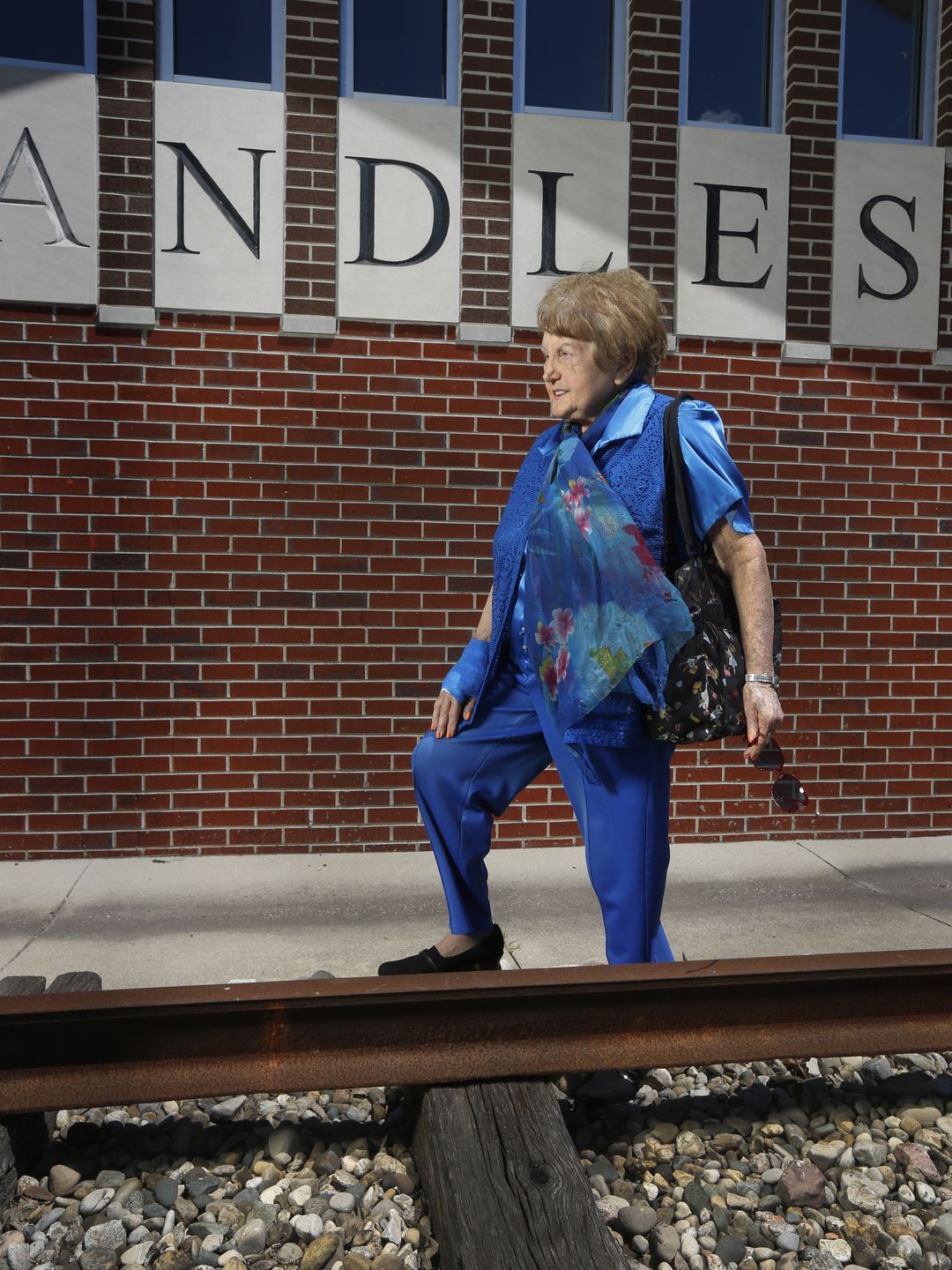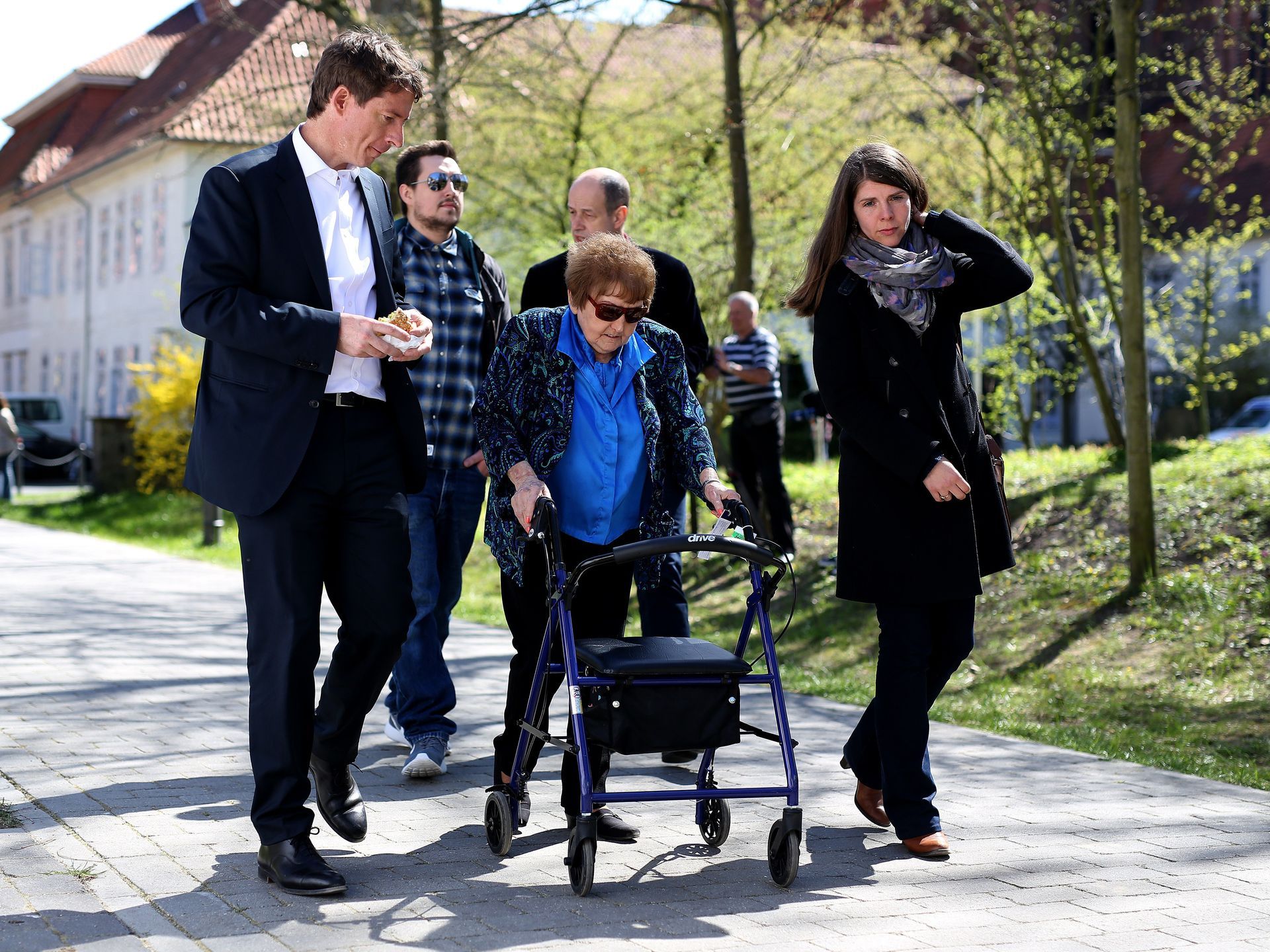Holocaust survivor: Nazi’s hug just ‘kindness’
About 30 people visited Wildlife in Need in Charlestown, Ind., during a summer fundraiser event called Tiger Baby Playtime. Visitors paid $25 to pet and play with two baby tigers.
EMBRACE FROM ‘ACCOUNTANT OF AUSCHWITZ’ NOW PART OF HOLOCAUST SURVIVOR EVA KOR’S AMAZING STORY
A village in Romania
'WHAT WOULD BECOME OF US?'
TERRE HAUTE, Ind. – To Eva Kor, it was a fleeting embrace. But to the world, it became a much more polarizing and defining moment.
That’s not to say Eva, a Holocaust survivor subjected to Dr. Josef Mengele’s cruel experiments on twins, doesn’t understand the global reaction of awe and disgust. After all, the man who hugged and kissed her this spring was Oskar Groening, the “accountant of Auschwitz.”
But for Eva, it was a simple act of kindness offered by a feeble old man. And she accepted.
She’d long ago forgiven the Nazis, Mengele, even Adolf Hitler.
And Groening.
“It was one of those meetings between two worlds that at one time would have not been possible,” she said of her encounter with Groening in a German courtroom during his April trial. “And 70 years later I definitely sensed in that touch and in that hug and in that kiss that he was very sorry for what happened.”
Whatever anyone else thinks of the embrace, she’s grateful for it.
“Because of his grabbing and hugging me, people became interested in the story,” she said.
Eva has told that story countless times at the CANDLES Holocaust Museum and Education Center in Terre Haute. To schoolchildren. To retirees. To vacationers who stumble upon the museum in the brick building on South Third Street near the Tromp and Tread Boot Plaza and Station Break, where customers can get a 10-minute oil change.
The story begins more than three-quarters of a century ago in Portz, Romania, a tiny village where Eva and her family were the only Jews. At 81, Eva still remembers when Hungarian Nazis took over the one-room schoolhouse designed to teach peasant children like her and her twin sister, Miriam.
The last photo of the Mozes family before their demise at the Auschwitz concentration camp. Only identical twins Eva and Miriam survived despite bizarre medical experiments conducted on them by Dr. Josef Mengele. Photo courtesy of Eva Kor (Photo: Photo courtesy of Eva Kor)
“We had two new teachers who were very dedicated to teaching hatred against Jews,” she said. “Everything was involved in how to catch, kill Jews. A book had a math problem. It said: ‘If you have five Jews and you kill three, how many are left?’ So that is the way I started arithmetic in school.”
Because the twins were Jewish, the other students hit them and spat on them. Their teacher refused to help. Instead, she threw corn on the floor and forced Eva and Miriam to kneel on it for an hour while the other children taunted them. Eva hoped her mother would straighten things out.
“To my great surprise and disappointment,” Eva recalled, “my mother hugged us, kissed us and cried with us but said, ‘Children, there is nothing I can do. You have to learn that we are Jews, and you have to learn to take it.’ ”
At night, their father, a devoutly religious man, told his daughters to pray. “Don’t worry,” Eva said he told them. “Pray to God, and God is going to help us.”
As time went on, though, things got worse. Every six months a new law aimed at Jews was passed. In 1942, she said, Jews could no longer travel without a special permit. And they could hire only other Jews, a troublesome turn for a Jewish family in an all-Christian village. When her mother got sick, Eva’s father asked for a permit to go to the city to hire a Jewish woman to help with the farm.
The permit was denied.
Even at 8 years old, Eva felt the danger coming and told her father.
“I said to daddy, ‘It’s time to escape … and my father said, ‘Eva, you do not understand. You are a little girl. You’re only 8 years old. We have a nice home here. We have plenty of food. You children go to school. … The Germans won’t come to this tiny village to pick up six Jews.’ ”
He was wrong.
In March 1944, two Hungarian gendarmes carrying out German orders came to the Mozes home and took them to a regional ghetto where they stayed for about two and a half months. During the last week of May, soldiers loaded them into packed cattle cars, saying they were going to a labor camp in Hungary.
There was no room to sit. They leaned against each other, sweltering hot, with no supplies. The train stopped only to refuel. At each stop, the adults asked the guard holding a machine gun for water, and the same answer came back each time: “Five gold watches.”
The grown-ups would gather the watches and pass them through the tiny barbed-wire windows atop the cattle car. Then the guard would throw a bucket of water through the window. Eva put a cup over her head but never caught more than a few drops.
On the third day in the cattle car, when the adults asked for water, the answer came back not in Hungarian, but German.
“I was 10 years old,” Eva said. “I instantly understood what happened.”
The Jews were not being taken to a Hungarian labor camp. They had crossed into Germany and would soon be murdered.
Eight hours later, at the next stop, the request for water went unanswered. Germans yelled orders. The prisoners could hear dogs barking. Finally, the cattle car doors opened and thousands of people poured out onto a small strip called the selection platform.
Eva looked around and thought to herself: What on earth is this place?
Eva and Miriam’s mother tightly grabbed their hands, hoping that as long as she held on, she could protect them. Eva quickly realized that her father and older sisters had disappeared into the crowd.
Suddenly, an SS guard yelled in German. Zwillinge, Zwillinge! He was looking for twins and stared keenly at Eva and Miriam. He demanded to know: Are they twins?
“Is that good?” Eva remembered her mother asking. The Nazi nodded. Then an officer whisked Eva and her sister in one direction and their mother the opposite.
“We were crying,” Eva said. “She was crying. And all I really remember is seeing her arms stretched out in despair as she was pulled away. I never even got to say goodbye to her. And all that took 30 minutes from the time we stepped down from the cattle car. Miriam and I no longer had a family. We were all alone, and we had no idea what would become of us.”
Journey to Auschwitz
BECOMING A ‘MENGELE TWIN’
Eva doesn’t remember Groening, the SS officer in his 20s, the so-called “accountant of Auschwitz” who would in July 2015 be convicted of 300,000 counts of accessory to murder and sentenced to four years in prison. But he was there.
Eva Kor was interned at the Auschwitz concentration camp during World War II. Kor and her sister were Mengele twins, subjected to medical experiments by Dr. Josef Mengele while at the camp. She has spent most of her life in Terre Haute, Ind., searching for other twins and information on the experiments that were performed on them. (Photo: By Pat McDonogh, The CJ)
By his own testimony, Groening kept watch and searched the luggage of thousands of Jews led to the gas chambers. He counted money he found and sent it to the SS office in Berlin. He knew from his first night at the camp what was happening. He heard it from other SS officers. Obedience, he told the German court, prevented him from defying the daily atrocities.
“In September 1944 we were told that the next day we would participate in the eviction and extermination of the residents of a Ghetto,” he told the court in German. “It dawned on me that for the first time I would have to participate in the killings. It was something I could not do.
“I stayed away from the barracks that night so I wouldn’t get the order to clear the Ghetto, but that would have consequences. The command staff had already moved out – without me. From that point it was clear that I couldn’t deny direct participation in the killings. That triggered my third and final application for transfer to the front – which finally came in October, 1944.”
From Eva and Miriam, much more would be taken.
After sitting naked most of the day after their arrival, the twins were processed at Auschwitz. They were given short haircuts and tattoos. Eva became A-7063, her sister A-7064.
They marched through camp to a wooden, modular horse barn, filthy and crude with rows of bunk beds. Eva was afraid of the rats, so she and her sister went to the latrine. There they found the scattered corpses of three children.
“So right then and there I made a silent pledge that I would do anything and everything within my power to make sure that Miriam and I shall not end up on that filthy latrine floor,” Eva said.
She never told anyone, not even Miriam. Her thoughts turned inward.
How to sleep?
How to get more food?
Eva Kor points to the tattoo that was placed on her arm upon her internment at Auschwitz. (Photo: By Pat McDonogh, The CJ)
Because their food was just enough to starve to death. No more than 300 calories a day. Breakfast was lukewarm, brownish liquid. Lunch, if they were in the barracks, looked like cream of wheat but was impossible to swallow. At night, they got a piece of very dark bread about two inches long. Hunger was constant, relentless. They could not escape it.
“It was never over,” Eva said. “It was never, ever over.”
Eva didn’t once contemplate the fate of her parents or siblings, or give it a thought if she walked over a dead body. Older people told her: If you cry, you die. And she believed them.
“The mind cannot concentrate on death and living at the same time,” she said.
The instinct to survive eclipsed everything, even the experiments run by Mengele, known as Todesengel, the angel of death.
Eva and Miriam were part of a group of twin girls ages 2 to 16. On Mondays, Wednesdays and Fridays they were placed in a room naked for up to eight hours. Nazi doctors measured every part of Eva’s body and compared the results to Miriam’s and to charts. Mengele hoped to find a way to engineer a perfect race.
“These experiments weren’t dangerous, but for eight hours a day?” Eva recalled. “I felt like I was nothing more than a living piece of meat.”
On Tuesdays, Thursdays and Saturdays came the “blood lab experiments.”
“They would take us to a lab, tie both of my arms to restrict the blood flow, take a lot of blood from my left arm and give me a minimum of five injections into my right arm,” she said. “... The rumor was that they were germs, diseases and drugs.”
One made her extremely ill. She had a fever of 106 degrees. Both arms and legs were painfully swollen, and huge red spots covered her body. Nazi doctors measured her fever and took her to the hospital, where Eva thought people looked more dead than alive.
The next morning, the Todesengel came in with four other doctors. Mengele looked at her fever chart and laughed. “Too bad,” Eva remembers him saying. “She’s so young. She has only two weeks to live.”
Eva and Miriam Mozes at age 12 months. (Photo: Photo courtesy of Eva Kor)
Eva knew he was right, but she refused to die. She made a second silent pledge to prove him wrong.
Eva has one memory of the following two weeks as her fever held on. She was crawling on the barracks floor to reach a water faucet, repeating as she faded in and out of consciousness: I must survive. I must survive.
Eva’s fever finally broke, and she began to feel a bit stronger. Eventually she was reunited with Miriam. If Eva had died, Miriam would have been killed by an injection to the heart, and Mengele would have performed comparative autopsies.
To this day, Eva has scant information about the experiments the Nazis performed on her and Miriam. She has only three documents, one that shows throat smears for scarlet fever, another of blood samples “for the examination of syphilis” and a third of blood samples for “the examination of urea nitrogen, sodium chloride, Takata-Ara and Vitamin C.”
On Jan. 27, 1945, the Soviet Army liberated Auschwitz, and the Mozes twins walked out of the camp together. Eva had kept her silent pledge.
'I survived'
SEEKING ANSWERS, FINDING FORGIVENESS
After liberation, the sisters lived in Romania for five years before emigrating to Israel in 1950. They went to an agricultural school and were then drafted into the Israeli Army. Miriam became a nurse, and Eva went into the engineering corps.
Eva met Michael Kor, a Holocaust survivor and American tourist. In 1960, they married in Tel Aviv, and Eva joined him in the United States. In 1965, Eva became a U.S. citizen. They raised two children.
Miriam also married and had children but developed kidney infections that didn’t respond to antibiotics. Her kidneys had never grown larger than a 10-year-old’s. Eva gave Miriam one of her kidneys in 1987, but Miriam died of cancer in 1993.
Holocaust survivor Eva Kor’s life lessons
That same year Eva was invited to lecture in Boston and was asked if she could bring a Nazi doctor with her. She contacted Hans Münch, a physician at Auschwitz who’d known Mengele. She’d seen him in a documentary. He agreed to meet her in Germany. Though he didn’t know anything about the twin experiments, he shared details about the gas chambers. Eva asked him to join her at Auschwitz and sign a document attesting to what he’d seen — the selections and gassing of thousands of people. He agreed.
Eva wanted to find a meaningful thank-you gift for him and settled on the idea of a forgiveness letter. A friend challenged her to forgive Mengele, too. When she and Münch stood at the ruins of the gas chambers on the 50th anniversary of the liberation of Auschwitz and read their statements, Eva felt unburdened. Forgiveness wasn’t about the perpetrators. It was about healing herself.
That’s why she assigned little meaning to the moment with Groening in the courtroom. He had expressed remorse for his actions.
94-year-old former SS Sgt. Oskar Groening listens to the verdict of his trial Wednesday, July 15, 2015, at a court in Lueneburg, northern Germany. Groening, who served at the Auschwitz death camp was convicted on 300,000 counts of accessory to murder and given a four-year sentence. (Axel Heimken/Pool Photo via AP)
“I have consciously not asked forgiveness for my guilt,” Groening said in German. “In the face of the crimes committed in Auschwitz and elsewhere, I am not entitled to make such a request. For absolution, I can only turn to God.”
Eva wanted to thank him for accepting responsibility for his part in the Auschwitz killing machine and plead with him to talk to neo-Nazis, Holocaust deniers and revisionists because he’d been there.
And then came the embrace.
Now Eva would like to meet Groening again, this time privately. She has many questions. What was it like to be a Nazi at Auschwitz? How did he cope knowing so many people were being murdered? Did he drink at night? Does he know anything about the experiments? The gas chambers?
At her age, Eva realizes she may go to her grave without all the answers. But she’ll keep looking.
In the meantime, she’ll repeat her story again and again. To a German film crew. To a British documentarian. To the line of visitors waiting at her museum in Terre Haute.
I was born in a very small village in Transylvania, Romania ... I made a silent pledge ...
I survived.
Originally published in the Courier Journal

